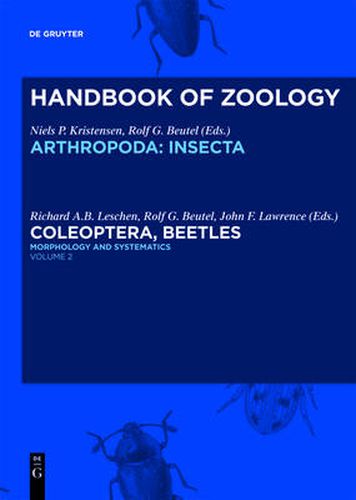Readings Newsletter
Become a Readings Member to make your shopping experience even easier.
Sign in or sign up for free!
You’re not far away from qualifying for FREE standard shipping within Australia
You’ve qualified for FREE standard shipping within Australia
The cart is loading…






This book is the second offour volumes in the Handbook of Zoology series which treat the systematics and biology of Coleoptera. With approximately 350,000 described species, Coleoptera are by far the most species-rich order of insects and the largest group of animals of comparable geological age.
The beetle volumes will meet the demand of modern biologists seeking to answer questions about Coleoptera phylogeny, evolution, and ecology. This second Coleoptera volume covers the remaining polyphagan taxa (apart from Phytophaga) and recently described groups not included in the first volume (covering the suborders Archostemata, Myxophaga and Adephaga, and the basal series of Polyphaga), with information on world distribution, biology, morphology of all life stages (including anatomy), phylogeny and comments on taxonomy.
$9.00 standard shipping within Australia
FREE standard shipping within Australia for orders over $100.00
Express & International shipping calculated at checkout
This book is the second offour volumes in the Handbook of Zoology series which treat the systematics and biology of Coleoptera. With approximately 350,000 described species, Coleoptera are by far the most species-rich order of insects and the largest group of animals of comparable geological age.
The beetle volumes will meet the demand of modern biologists seeking to answer questions about Coleoptera phylogeny, evolution, and ecology. This second Coleoptera volume covers the remaining polyphagan taxa (apart from Phytophaga) and recently described groups not included in the first volume (covering the suborders Archostemata, Myxophaga and Adephaga, and the basal series of Polyphaga), with information on world distribution, biology, morphology of all life stages (including anatomy), phylogeny and comments on taxonomy.